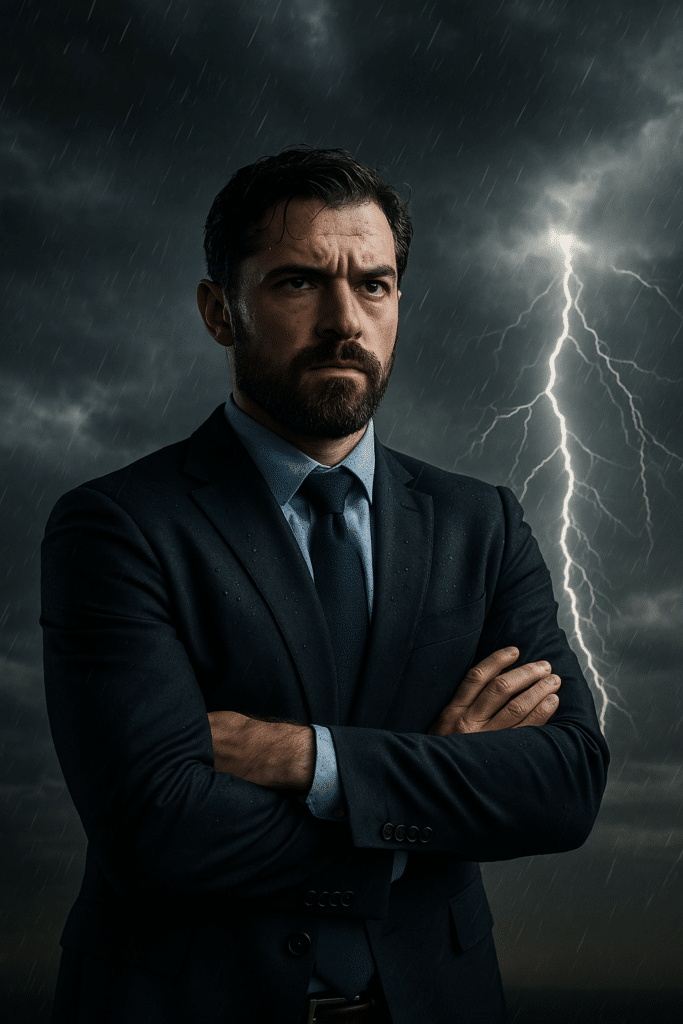Leadership resilience training is not a luxury for today’s leaders—it’s the price of admission if you want to survive and thrive under pressure. In a world where change is constant, chaos is inevitable, and stakes are high, your ability to lead when things fall apart is what separates strong leaders from struggling ones.
This blog breaks down seven brutal truths about leadership resilience training and why hiring a coach who specializes in resilience and tenacity is the ultimate power move.
- Stress is your training ground
- Confidence comes from consequences
- Emotions are tools, not enemies
- Rest is a strategy, not a reward
- Your team feeds off your energy
- You will be judged at your worst
- Soft skills are harder than you think
Truth #1: Stress is Your Training Ground
Leaders don’t magically rise to the occasion; they fall to the level of their training. Leadership resilience training is about replicating pressure in a controlled environment so you’re not blindsided when real crises hit.
Think of it as a leadership gym: if you never lift stress-heavy reps, don’t expect to hold the weight when it matters. Stress isn’t the enemy—it’s your sparring partner.
When you actively lean into difficult situations during training, you create a blueprint for how to respond under pressure. This builds neural patterns and behaviors that turn resilience from a theory into instinct. Real leaders aren’t fearless—they’re prepared.
Truth #2: Confidence Comes from Consequences
You don’t build resilience by reading books or attending feel-good seminars. Leadership resilience training must include real feedback, real consequences, and real stakes. Confidence is earned when decisions lead to impact—good or bad. That feedback loop sharpens instincts and hardens resolve. Resilience training without consequences is just theory.
Every high-performing leader has scars from bad calls—but they used those scars as teachers. Embracing the consequences, owning your outcomes, and learning from the blowback is where your confidence is built. Coaches use these moments to drive home lasting transformation.
Truth #3: Emotions Are Tools, Not Enemies
A cornerstone of effective leadership resilience is emotional mastery. Leaders who let their emotions run wild under stress damage morale and erode trust.
The best leadership resilience training includes emotional regulation as a core skill—teaching leaders how to leverage emotions for clarity, empathy, and action rather than letting them sabotage performance. Emotional intelligence is not soft; it’s strategic.
Strong leaders recognize emotions as data, not distractions. When you use emotional intelligence to read the room, manage your response, and communicate with intention, you lead with power instead of panic. This is the secret weapon of truly resilient leadership.
Truth #4: Rest Is a Strategy, Not a Reward
If you’re running on fumes, your leadership resilience will collapse. Business resilience definition experts agree: resilience isn’t just about pushing through—it’s about recovery. Smart leaders embed recovery into their strategy.
Leadership resilience training teaches energy management, not just time management. Rest isn’t what you do after the work; it’s what enables you to lead effectively in the first place.
Operating at full tilt 24/7 is a recipe for mental and emotional breakdown. Elite leaders build systems that include downtime, boundaries, and non-negotiable personal rhythms. They understand that a rested mind makes sharper decisions and leads with greater presence.
Truth #5: Your Team Feeds Off Your Energy
Leadership isn’t a solo act. Your team takes cues from your tone, presence, and energy. If you’re erratic, drained, or checked out, your team feels it—and mirrors it. Leadership resilience training helps you become the calm in the storm, the thermostat instead of the thermometer. When you show up composed and centered, your team finds its footing.
Culture is contagious. Whether you bring chaos or clarity, it spreads. Leaders who invest in resilience training radiate stability, which empowers teams to step up rather than shut down. Your emotional state becomes your team’s operating temperature.
Truth #6: You Will Be Judged at Your Worst
No one remembers your best day. They remember the moment everything fell apart—and how you responded. Leadership resilience is forged in crisis. When you’re under fire, there’s no time to figure it out on the fly.
That’s why resilience training must prepare you to operate when the pressure is highest. This is where most leaders get exposed.
The breakdown moment is your defining test. Will you default to blame, freeze up, or rise up? Leadership resilience training puts you in simulations that mimic crisis so when the real thing hits, you don’t just react—you lead.
Truth #7: Soft Skills Are Harder Than You Think
Communication, empathy, clarity under pressure—these aren’t optional. Leadership resilience training drills these into your DNA because they’re what actually hold teams together when the world is burning.
Technical skills may get you the title, but soft skills are what help you keep the team, the trust, and the mission intact.
You can’t delegate emotional intelligence. You have to embody it. In moments of panic, it’s not your resume that matters—it’s your presence, tone, and trustworthiness. Resilient leaders win because they stay human in the heat.
Why You Need a Coach for Leadership Resilience Training
Resilience isn’t something you can self-diagnose. You need someone who can see your blind spots, challenge your patterns, and coach you through the reps. Hiring a coach for leadership resilience training gives you three unfair advantages:
- Accountability: You don’t get to hide. A coach holds you to your standard.
- Clarity: In moments of chaos, your coach is the mirror, helping you course-correct in real time.
- Structure: Resilience training becomes a routine, not a one-time workshop.
This is why Champion PSI integrates resilience and tenacity into every coaching model—because leadership without resilience is like a race car with no brakes.
Meet Shawnee Harle: Mental Toughness Expert at Champion PSI

If you want elite-level leadership resilience training, you need someone who’s lived it. Shawnee Harle is Champion PSI’s mental toughness coach, with a resume that includes coaching two Canadian Olympic teams and mentoring high-stakes performers across industries. Shawnee brings a rare combination of high-performance psychology and no-BS coaching.
She specializes in helping leaders navigate their internal landscape so they can lead with clarity and control, even when everything around them is on fire. Shawnee’s coaching is especially powerful for executives, founders, and senior leaders who need to build resilience and tenacity at scale.
Why leaders work with Shawnee:
- She trains you to think like an athlete and lead like a pro
- She doesn’t sugarcoat—she sharpens
- She gets you ready for the real game, not the warm-up
“I help leaders figure out what’s going on inside their heads so they can lead better outside,” says Shawnee.
Working with her isn’t comfortable—and that’s exactly the point. Because comfort doesn’t build resilience. Pressure does.
Embedding Leadership Resilience Training in Your Culture
Workshops don’t stick if they’re one-and-done. If you want true business resilience, you have to make resilience training a rhythm, not a retreat. That means:
- Weekly coaching sessions
- Feedback-rich environments
- Scheduled recovery periods
- Culture-building around emotional intelligence and clear communication
Leadership resilience becomes the baseline when everyone from the C-suite to the front line trains for it consistently.
FAQ: Leadership Resilience Training
What is leadership resilience training?
Leadership resilience training is a structured method to develop emotional, mental, and strategic strength in leaders so they can thrive under pressure.
Why is resilience critical for leaders?
Because leading means navigating uncertainty, conflict, and crisis. Without resilience, leaders fold when it matters most.
What is the business resilience definition?
Business resilience is the ability of a company to quickly adapt to disruptions, maintain operations, and emerge stronger from adversity.
Can leadership resilience be taught?
Absolutely. With the right coach, framework, and reps, resilience becomes a trained skill, not a personality trait.
How is leadership resilience different from personal resilience?
Leadership resilience includes influencing and stabilizing others while staying grounded yourself. It’s about leading from the front under fire.
How often should resilience training occur?
Regularly. Ideally, it’s integrated into ongoing leadership development through coaching, reflection, and strategic stress exposure.
Who should I work with?
Someone with deep experience in high-performance coaching—like Shawnee Harle. Her leadership resilience training is built for real pressure, not theory.
Leadership Resilience Training: Conclusion
You don’t rise to the occasion. You rise to your training. If you’re serious about becoming the kind of leader people trust in chaos, leadership resilience training isn’t optional. It’s operational. And with the right coach in your corner, you don’t just survive—you lead.
Ready to build unshakable leadership? Start with Champion PSI. Book a free 30-min session today










